Exploring the Creation of Hyrule in the Zelda Universe
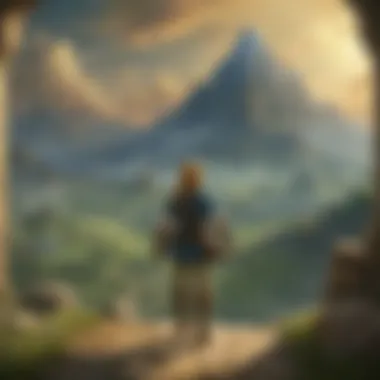

Intro
In the vast realm of gaming, few universes compare to the intricate lore and mythology found in the Zelda series. This enchanting world captivates players through its unique narratives and diverse characters. At the heart lies Hyrule, a landscape rich with history and mystery. This article will unravel the intricate web of creation myths, legendary artifacts, and transformative events that shape not just Hyrule, but also its many inhabitants. Through careful exploration, we aim to illuminate the sophisticated storytelling embedded within the games, considering the evolution of the lore from its inception to more recent title releases.
Game Reviews
This section addresses how the games contribute not only to entertainment but also to the expansive lore of the Zelda universe. We will evaluate specific gameplay features, meaningful quests, graphics, and how they compare with previous entries.
Gameplay Features and Mechanics
A standout aspect of the Zelda experience involves its gameplay mechanics. Titles like Breath of the Wild or Ocarina of Time uniquely blend exploration, combat, and puzzles, forging deeply immersive experiences. The flexibility to approach actions in myriad ways nuances the passive and active story elements.
Storyline and Quests
The narratives often hinge on the timeless struggle against evil, with each game building on narratives from earlier titles, introducing new characters and plot elements that deepen player immersion. Iconic quests showcase essential themes like courage, friendship, and sacrifice, embedding substantial meanings within the action.
Visuals and Sound Design
The aesthetics of the series contribute to its storytelling. Visual styles, from the cell-shaded approach in The Wind Waker to the more realistic art of Breath of the Wild, shape tone and atmosphere.
Soundtrack
Music plays a critical role. In every title, musical compositions reflect the achievements and emotions experienced, further rooting players in the world.
Comparison with Previous Titles
As a transformational saga, examining how each installment innovates core systems enriches player understanding. From the 2D exploration of early titles to the more open-world mechanics of recent games, deviations add layers to both gameplay and lore.
The evolution of The Legend of Zelda series is a journey through time, reflecting culture, technology, and storytelling evolution.
Conducting this comparison sets the stage for understanding the larger narrative landscape found within this iconic series.
Character Analyses
Stepping beyond gameplay, character depth enhances the player's connection to the series. Iconic personas like Link, Zelda, and Ganondorf encase values, histories, and legacies.
Popular Characters Overview
Link signifies heroism while Zelda manifests wisdom, illuminating both the theme of courage and the complexity behind their intertwined fates. We will present their first appearances and notable development over time.
Character Development and Backstories
Unpacking each character’s backstory unveils motivations and roles molded by their experiences. Players may discover intricate relationship dynamics, whether friendly or hostile.
Role in the Zelda Universe
Each character shapes the universe. Decisions by Link span actions of time and consequence within Hyrule's evolving landscape, while the struggles faced by Zelda impact the throes of power and ethos, adding more complexity to the overarching narrative.
Fan Theories and Speculations
A lively community contributes speculation on character destinies and lore hidden through subtle clues in games. Exploring various theories enriches individual interpretations of events across the timeline.
Lore Discussions
The Concept of Creation in Zelda
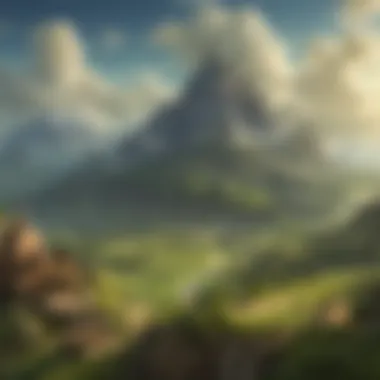

Understanding the concept of creation in Zelda enriches our appreciation for its intricate narratives and character developments. This topic is paramount because the mythical foundations laid within the universe influence how players interact with the games, perceive the world, and make sense of hybrid conflicts between good and evil. Merely appreciating Hyrule as a physical world is inadequate without recognizing its metaphysical attributes, which lie in the notions of divinity, creation, and the patterns of these elements above humans and beyond earth.
Definition of Creation
Creation, in the context of Zelda, can be defined as the genesis of Hyrule, its landscapes, deities, and the manifold stories that revolve around existence. It encompasses both the physical shaping of the world and the mythological tales transmitted through generations. Legend of Zelda sources consult the ideas of opposeing powers, growth, and how characters align with these forces within the expansive architectural legacy of gaming.
Hyrule's creation did not occur in isolation. Instead, it is influenced by a broad range of interactions, engagements, and sprawling geography packed with lore. The emotions and values associated with creation are deeply embedded in the characters gracing its realms, bringing individuals to rebel or align with their presumed destinies, as shaped by these inherent conflicts.
The Role of Creation Myths
Creation myths serve a significant role by establishing the cosmological parameters of the Zelda universe. The narrative brought forth sheds light on the relationships between deities, mortals, nature, and the moral cores interlacing these domains. Constructed frameworks of creation myths, particularly those featuring Goddess Hylia, illuminate the philosophical angles that emerge throughout the series.
These rifled plottings do not only inform about the grand scale of Hyrule's genesis but also demand inquiry regarding players' identities influenced through their heroic journeys. With subtleties arising through divine intervention and chaotic forces wielding power, players engage with narration, not limited to mere events; rather, they are partaking in cycles of existence and historical retellings elighening Zelda’s comprehensive potential.
“A universe crafted through lore refines experience and heighten game engagement.
The Timeline of Hyrule
The timeline of Hyrule is foundational to understanding the itself and its lore unfolding across various games. The narrative thread weaves through numerous events and transformations, fostering a deeper appreciation of Hyrule's complexities. Analyzing this timeline provides insight into the world’s evolution and reveals essential historical contexts underlying each game's story.
Establishing a Chronology
Establishing a chronology of events in the Zelda mean recognizing significant events documented within key titles. Each era is marked by crucial events, such as the rise of influential characters or tragic sagas that shape the realm's landscape. The timelines, found in both The Legend of Zelda Encyclopedia and online sources, act as maps guiding fans through the rich narrative pathways formed by various games.
A coherence remains integral to the dating: importantly, various timelines exist due to different game endings. This leads to approaches like the three-timeline theory, culminating from Link's failures or triumphs during pivotal moments, such as the struggle against Ganondorf. Through this lens, Hyrule's history comprises interconnected narratives across the series that expand when new games are released.
Major Eras in Hyrule's History
Hyrule's history can be divided into several major eras, each leaving a distinct mark on the overcoming challenges, victories, and tragedies faced.
- The Era of the Goddess: This time period marks the establishment of Hyrule under the rules of deities, such as the Goddess Hylia. It includes the creation of the land itself and the evolution of its inhabitants.
- The Era of the Hero: This era features the legendary hero Link rising to face threats, showcasing the battle against darkness. Major events occur here, such as the imprisoning of the Demon King and establishing peace.
- The Era of Decline: A time of uncertainty where chaos arises, marked by the disgrace of royalty or absence of heroes. Different concluding endings, depending on Link’s fate, shape responses against the danger of enemies like Ganon.
Notably, while individual games showcase specific timelines, like in Ocarina of Time, they contribute to the overarching narrative of Hyrule’s history, accentuating a feedback loop of creation and destruction, enforcing the main themes of sacrifice and resilience.
“Each of these eras brings forth sharpened narrative points, reminding players that choices matter and intertwine risks with rewards. It hints that time is vibrant and Hyrule’s refining destiny continual.”
Asking questions in community forums, like on Reddit, leads many fans to dive deeper into these timelines, increasingly feeling the connection to the game’s narrative arcs. This participatory layer showcases how Hyrule is not just a backdrop for adventures, but a living, multifaceted entity enriched through exploration and interaction, urging followers to remain engaged with the saga.
The Creation of the World
The Primordial Forces
In the ecosystem of the Zelda universe, the concept of the Primordial Forces holds substantial significance. These forces represent the fundamental elements that shaped Hyrule into the realm we know today. Among the key figures are the goddesses: Din, Nayru, and Farore. Their existence signifies intentionality in creation rather than mere accident.
Each goddess embodies a particular force; Din brings power and creation through fire and force. Nayru exemplifies wisdom, establishing order through her counsel. Farore represents the element of courage, bestowing two vital attributes of strength upon the individuals. Their conjoint role culminated in a balanced creation, constructing a multifaceted environment with both light and dark flavors. The interactions between these forces serve not just as a backdrop but as a framework through which various narratives unfold across games of the franchise.
The Birth of Hyrule
The Birth of Hyrule transpires as a significant moment in the Zelda universe. It serves as a manifestation of the primordial forces working in unison, shaping the physical landscape. In the mythos, the world emerges from an expanse of chaos, characterized by tension and in equilibrium. The vision that the goddesses impart laid the foundations for Hyrule’s geography, its peoples, and its multifaceted history. This tapestry establishes regions like Hyrule Field and the Lost Woods, adding layers of history and mythology to every recognizable terrain.
Interestingly, the introduction of the Triforce creates a basis for spiritual and physical power within Hyrule. The creation story succinctly addresses the allocation of power among the deities and bears importance as an emotional anchor. Players today derive curiosity from searching its enigma, piecing together the myths and cultivating their individual interpretations. In essence, the Birth of Hyrule encompasses both a significant mythological origin and an intricate component of contemporary gameplay.
The Trilogy of Light, Dark, and Spirit
The Trilogy of Light, Dark, and Spirit expands the themes initiated by the goddesses and delves into the duality present in Hyrule’s creation. Each aspect represents guiding principles that influence the series. The representation of Light showcases goodwill, prosperity, and hope. This serves as the ideal that Hyrule strives to achieve in every game.
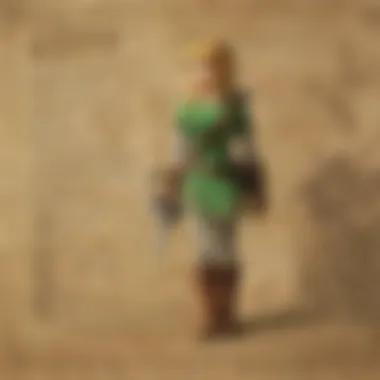
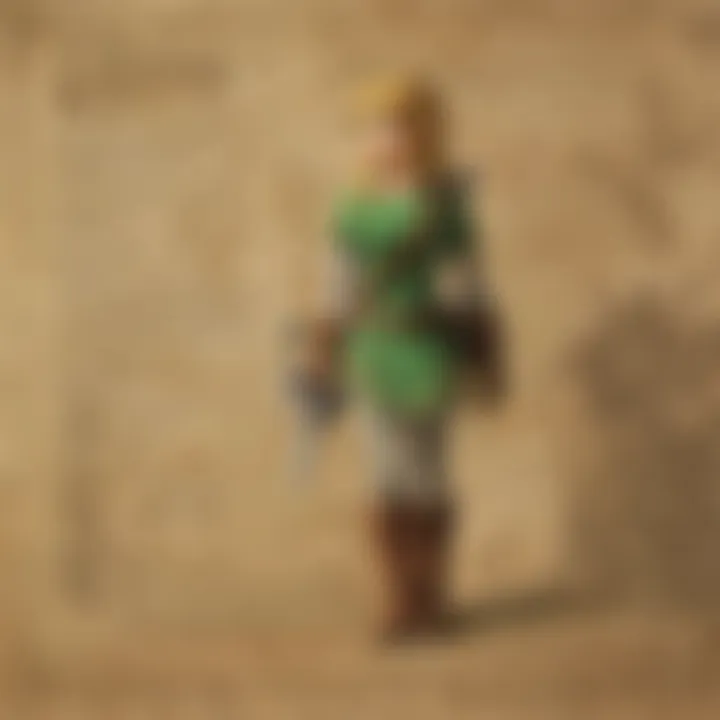
Contrast arrives with Dark, which signifies chaos, malice, and uncertainty. Characters, emergent from dark forces, consistently test the allegiance of player characters like Link. This push and pull between Light and Dark provides a grounding tension required for an engaging narrative. Furthermore, the Spirit element elucidates the connections across realms, showcasing Hyrule as not merely a physical world but one layered with spiritual significance. This allows narrative to transcend beyond simple combat encounters. Integral battles ensue as beings traverse different planes of existence, offering depth beyond the gameplay.
Ultimately, the Trilogy not only facilitates changing narratives across various installments but also celebrates the rich lore embedded in the Zelda universe. It brightens the complexities and inter-relations present, revealing a robust world reflective of the intended never-ending journey embarked on by fans and players alike.
The creation of Hyrule is not merely a backstory; it's a cornerstone for understanding player motivations and character developments in the Zelda franchise.
Key Characters in Creation Myths
The characters involved in the creation myths of the Zelda universe exhibit strong thematic and narrative roles. They help set the stage for the complex histories of Hyrule and resonate with players on multiple levels. The Goddess Hylia symbolizes light and purity, acting not only as a deity but as a protector of balance. In contrast, the Demon King embodies chaos and destruction, fostering conflict that propels the stories forward. Understanding these characters provides insight into the dualities that define the Zelda universe.
The Goddess Hylia
The Goddess Hylia is central to the lore of the Zelda universe. She represents the benevolent force responsible for the creation of Hyrule. Hylia is often perceived as a figure ofguidance and protection. Her attributes reflect light and harmony. Hylia’s involvement is quite pivotal in several games, particularly in The Legend of Zelda: Skyward Sword.
In that title, players learn the story of Hylia and her dedication to sealing away evil forces. She wielded her powers to create the Loftwings and Hyrule itself. This foundational role characterizes the idea that light counters darkness. Moreover, her strong motive to protect the Triforce reflects the values of courage, wisdom, and power.
Hylia’s influence on characters like Link and Zelda highlights her importance. Their journeys are often about resolving issues that her actions predicated. The resolve of good over evil in Hyrule often circles back to her initial creations and choices. The essence of Hylia shapes much of Hyrule's ethos.
The Demon King
Contrasting with Hylia, the Demon King serves as a representation of perpetual adversity. This character plays a vital role in establishing conflict, one of the critical driving forces in the narrative. Ganondorf, the most recognized incarnation, inflicts chaos on Hyrule, prompting heroes to rise in response.
His quest for power often has links to the Triforce too, demonstrating a constant struggle for dominance over Hylia’s legacy. The concept of evil is as intrinsic as good in the Zelda narrative, making the Demon King essential to overall character development.
Every conflict stemming from him has repercussions for all beings in Hyrule. The cycles of the exchange between good and evil represent philosophical ideas of balance. Being able to confront Ganondorf or other demon kings is part of what makes Link's journey meaningful.
The dichotomy between Hylia and the Demon King showcases the exploring of good against evil*. Their respective roles in the lore underscore significant narratives that keep players engaged throughout their quests. Understanding these characters enhances the appreciation of the rich environment, reflecting on love, loss, and perseverance within Hyrule.
Influence of Ancient Texts
The role of ancient texts in the The Legend of Zelda series offers various insights into the creation and development of Hyrule. These texts serve not only as historical documents within the game but also reflect on the narratives shaped by the mythology that inspires the overarching story arc throughout the series. In understanding these texts, players can gain a deeper appreciation for Hyrule's vast lore and gain context for the innumerable quests populated throughout the various games.
The Legend of Zelda Encyclopedia
The Legend of Zelda Encyclopedia stands as a monumental resource that collects extensive information about the series. Released in 2018 as part of the 30th anniversary of the franchise, this book provides a meticulous recounting of characters, locations, and mythology from every notable title within the series.
As players examine its pages, they derive insights such as the significance of key celestial orders or historical accounts that shaped Hyrule's topographical elements. The encyclopedia acts as a compendium for players navigating the complex timelines. It identifies pivotal symbols and recurring themes, clarifying their importance in each game's plotline.
In both academic and fan discussions, references from this encyclopedia bolster analyses on critical events such as Ganon's recurrent ascendance to power or the cyclical nature of heroism depicted within the narratives. Thus, it serves as an essential guide for any serious Zelda enthusiast seeking a thorough understanding of the franchise’s development.
Interpreting Ancient Scripts
The process of interpreting the esoteric scripts seen in the games reveals fascinating correlations to Japan's layered cultural storytelling traditions. Players often uncover these scripts within the ruins or chronicles significant to the game environment, such as, hidden libraries or inscriptions on ancient artifacts.
These scripts function not only as lore devices but also as clues for puzzle-solving intrinsic to game progression. Every rogue passage bears the weight of history and substance regarding Hyrule’s dynamic identity full of heroes, villains, and the eternal struggle for balance.
In rediscovering and deciphering these texts, enthusiasts engage with the lore in a meaningful way. Each revelation can refocus the understanding of pivotal tales, reshaping player perspectives on character motivations or on occurrences such as the creation of the Goddesses or the establishment of the Triforce. Furthermore, through community discussions around these inscriptions, players enhance their insights into the mythology, contributing to an evolved interpretation of the vast interconnected narratives. Overall, ancient scripts engender a profound dialogue, fostering deeper bonds to dead perspectives and the interactive nature of Zelda.
The Evolution of World Building
Understanding the evolution of world building within the Zelda universe is pivotal to grasping how Hyrule has transformed throughout its games. This section offers insight into the development of narrative structures that serve both gameplay and storytelling. It explores how early innovations laid groundwork that later adaptations could elaborate on, enriching the gamer experience. In essence, the design choices in crafting Hyrule are fundamental for both environmental immersion and contextual richness.
Early Games and Their Narrative Structures
Initially, the Zelda games established simple yet engaging narrative frameworks. The original The Legend of Zelda, released in 1986, introduced players to a world where the protagonist, Link, was tasked with rescuing Princess Zelda and defeating Ganon. The story was conveyed through a minimalistic approach, relying heavily on player exploration. This gameplay style encouraged interaction with the environment, and it intertwined action and discovery.
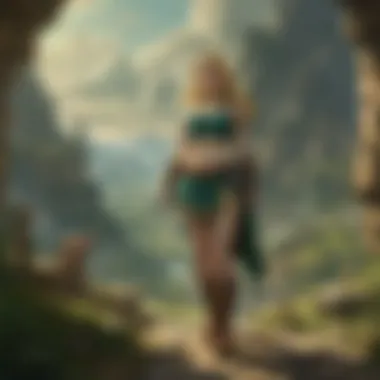
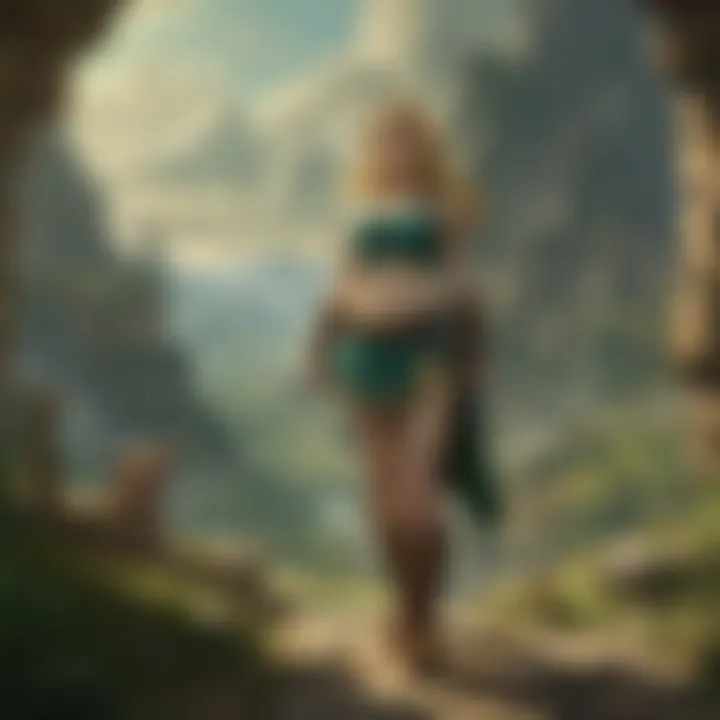
Some fundamental aspects of earlier narrative strategies include:
- Linear Progression: The plot primarily followed a straightforward path, guiding players through a predefined sequence of events.
- Collectibles and Quests: Items like the Triforce were introduced as goals that shaped both gameplay and story advancement.
- Environmental Storytelling: The design created through dungeons and land formations told a story that beckoned deciphering.
In early titles, the backstory had limited exposition due to the hardware constraints, but players frequently pieced together lore through adventure.
Modern Interpretations in Recent Titles
With advancements in technology and narrative techniques, later titles began implementing more sophisticated storytelling elements. For instance, in The Legend of Zelda: Breath of the Wild, world building reaches new heights, shifting how stories are presented within an open-world format. It allowed greater player freedom while encouraging exploration through environmental clues.
Key features in modern developments include:
- Non-linear Gameplay: Players can choose their paths and objectives, allowing story to evolve based on individual experiences.
- Rich Environmental Detail: The landscapes themselves communicate lore and history, giving depth beyond typical dialogue.
- Character Development: Modern titles introduced more nuanced NPC characters, enriching the storytelling and emotional connections.
More than just mechanics, these elements of world building contribute immensely to the legacy of Hyrule.
"World building is not just an addition to the story; it's an essential part of it that shapes the player's perspective within that universe."
Through this evolution, the Zelda series discards some traditional constraints, embracing new storytelling methods. Even so, both early and modern interpretations show the significance of a thoughtfully constructed world that interlaces lore with gameplay, allowing players to fully immerse themselves in the mythical land of Hyrule.
Cultural Influences on Hyrule
The creation of Hyrule is not just rooted in its lore and mythology; it is significantly shaped by cultural influences. These factors derive from various sources, considering both Japanese and Western contexts. Understanding these influences offers deeper insight into the themes and narratives vibrant in the Zelda universe. In doing so, we observe how diverse cultural backgrounds interweave to create a complex rich tapestry that enriches Hyrule's narrative possibilities.
Japanese Folklore and Mythology
Japanese folklore plays a crucial role in laying the foundation for Hyrule. Central motifs found in classic stories like those of Shinto deities and myths overlap seamlessly with the narrative chosen in Zelda. A prime example is Goddess Hylia. Her character is heavily inspired by traditional Japanese goddess archetypes, epitomizing themes of protection, creation, and the overarching cosmic struggle between good and evil.
The manifestation of nature and spirits contributes significantly too. Hyrule's sprawling landscapes echo the reverence the Japanese hold for nature. The characters in the series frequently engage with diverse creatures and spirits, illustrating Shinto's practice of respecting nature. Deep forests, towering mountains, and sacred lakes resonate with these traditional beliefs, inviting players to explore their surroundings with a sense of awe.
Additionally, the narrative structure often involves a hero who embarks on a journey, reflecting the ‘monomyth’ or hero's journey found in various mythological stories worldwide. Such a narrative aligns closely with ancient **Japanese luxury novel
Fan Theories and Community Interpretations
Fan theories and community interpretations play a significant role in understanding the intricate layers of the Legend of Zelda universe. These theories have arisen from extensive discussions among fans, stretching the possibilities of narrative and character development far beyond the presented content within the games.
The excitement around collective analysis enhances the experience for gamers. With varying perspectives, the community delves into theories that often integrate disparate pieces of lore, forming a cohesive picture that can sometimes reveal underlying themes. Engaging with these interpretations allows both new and veteran players to connect deeply with Zelda’s expansive world.
Exploring Alternative Narratives
Alternative narratives allow fan communities to explore concepts and ideas that are not explicitly detailed in the games themselves. Important discussions happen around characters like Link and Zelda, focusing on their growth and relationships throughout the series. Localization differences and cultural background create many interpretations.
Through platforms such as Reddit or Facebook, fans share their thoughts and while exploring unpublished lore, illuminating what could occurs behind the curtain. For instance, many speculate the implication of timelines found in different Zelda titles without substantial proof. These stories provide neural food for many fans.
Culmination
The examination of creation in the Zelda universe enriches our understanding of the franchise's core themes and narratives. The meticulous explorations into its various aspects—such as its myths, characters, and cultural influences—reveal the layers of meaning embedded in the series. Each section previously discussed contributes to a wider comprehension of Hyrule’s fabricated world.
Summarizing Key Insights
The key insights within this deep dive into Zelda’s creation mythology reveal several crucial elements:
- The Primordial Forces: The interplay of creation and destruction is pivotal in shaping Hyrule.
- Characters and Their Roles: Figures like the Goddess Hylia demonstrate significant symbolic power in creation narratives.
- Cultural Influences: Understanding Japanese folklore and Western influences provide a context that amplifies theological underpinnings in the story arcs.
This structured narrative not only enhances our appreciation but also allows players to recognize connections among the games. It offers a solid foundation for anyone interested in Hyrule's formative conflicts, fostering a deeper engagement with the game's universe.
The Importance of Lore in Gaming
Lore serves as a vital framework for any gaming universe, impacting both narrative depth and player engagement. The lore in the Zelda series is crucial because it serves multiple functions:
- Character Development: Lore shapes the background and motivations of key figures, such as Link or Zelda.
- Narrative Consistency: Well-articulated lore provides coherence across various titles in the franchise.
- Community Engagement: It creates a deeper communal connection as fans speculate, interpret, and theorize.
In summary, the lore is not just background information; it enhances gameplay by providing a rich contextual tapestry that helps players understand their environment, enriching the playing experience as a whole.







